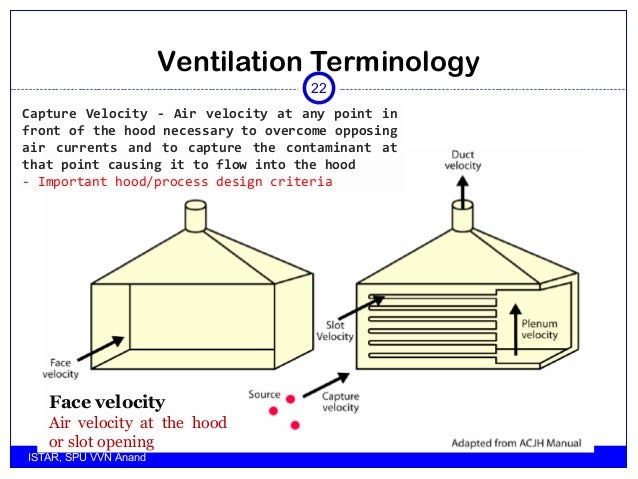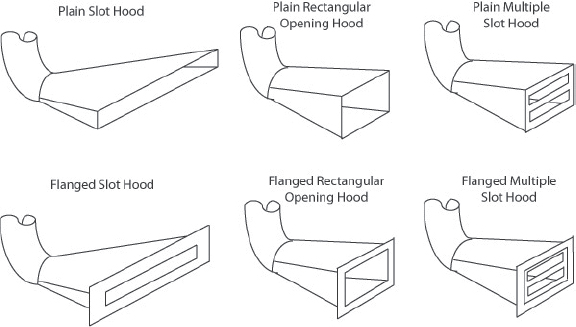Slot Hood Exhaust Design
Hood design Proper design of exhaust hoods is a must If you want effectively control athmospheric contanimation at its source with minumum air flow and power consumption.The theory of capture velocity depends on the creation of air flow past the source of. Sample Hood Design. Dust Exhaust System Hood Design. Dust Explosions A dust explosion is very similar to a gas or vapour cloud explosion, i.e. When a volume of a flammable mixture is ignited, resulting in a rapid pressure increase and fire moving through the cloud.
The primary goal of an industrial ventilation system hood is to capture and transfer environmental contaminants. A hood’s size and shape is designed specific to its end application but is typically classified within the enclosing hood or exterior hood category.

Hood Types

Enclosing hoods:
An enclosing hood will completely or partially surround the point where contaminants are generated. An enclosing hood is typically preferred but may not be practical due to potential interference with employee workstations.

- A partial enclosing hood has two to three sides where an inward flow of air through the opening will contain the contaminant within the enclosure and prevent its escape. Examples include paint spray booths or grinder station.
- A completely enclosing hood has all sides and is preferred whenever possible. A laboratory hood is an example of this use.
Exterior hood:
Exterior hoods are placed next to the point where contaminants are generated without creating an enclosure. An exterior hood may be an opening on a welding table or slots on the side of a tank. The exterior hood should be located in the path of the emission if transferring larger particulates such as sand.
There are four main types of exterior hoods:


- Canopy: A one- or two-sided overhead hood that receives upward airflow from hot air or gas.
- Close-capture: Mounted directly over the source of a contaminant.
- Push-pull: A hood placed on the side of a push-pull ventilation system.
- Side-draft (also called lateral exhaust hood): This is not as efficient as other containment or down-draft hoods.
Hood Velocity Considerations
A specific velocity is required, depending on the type of contaminant being captured. To achieve the required velocity, carefully consider the hood’s shape, size and location.
- Face velocity: Velocity right at the hood opening.
- Capture velocity: Velocity at the dust generation source to capture the contaminant and transfer it into the hood.
Ergonomic Considerations:
An industrial ventilation system hood is one of the most important components of an individual’s workstation. A worker will be more likely to use the hood and the ventilation system properly if ergonomic elements are considered. Among these considerations are:
- Accessibility to parts within the hood
- Size, design and weight of objects handled
- Safety cables
- Overhead clearance
- Sharp edges
- Lighting
- Ease of cleaning
Industrial Exhaust Hood Design
IVI’s engineering and design team has years of experience designing and sizing industrial ventilation systems. IVI can assist in the design of a new system or the redesign of an existing system.